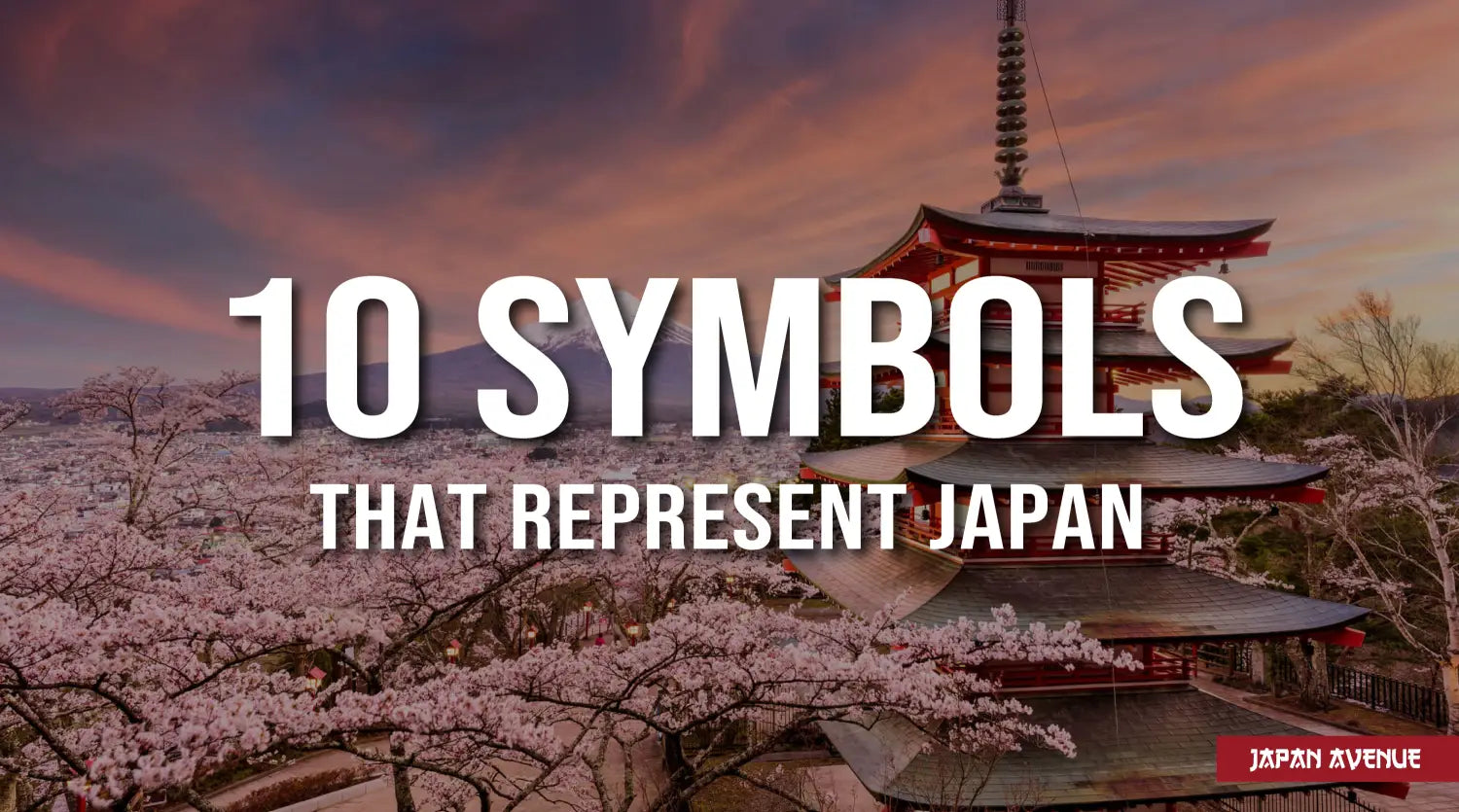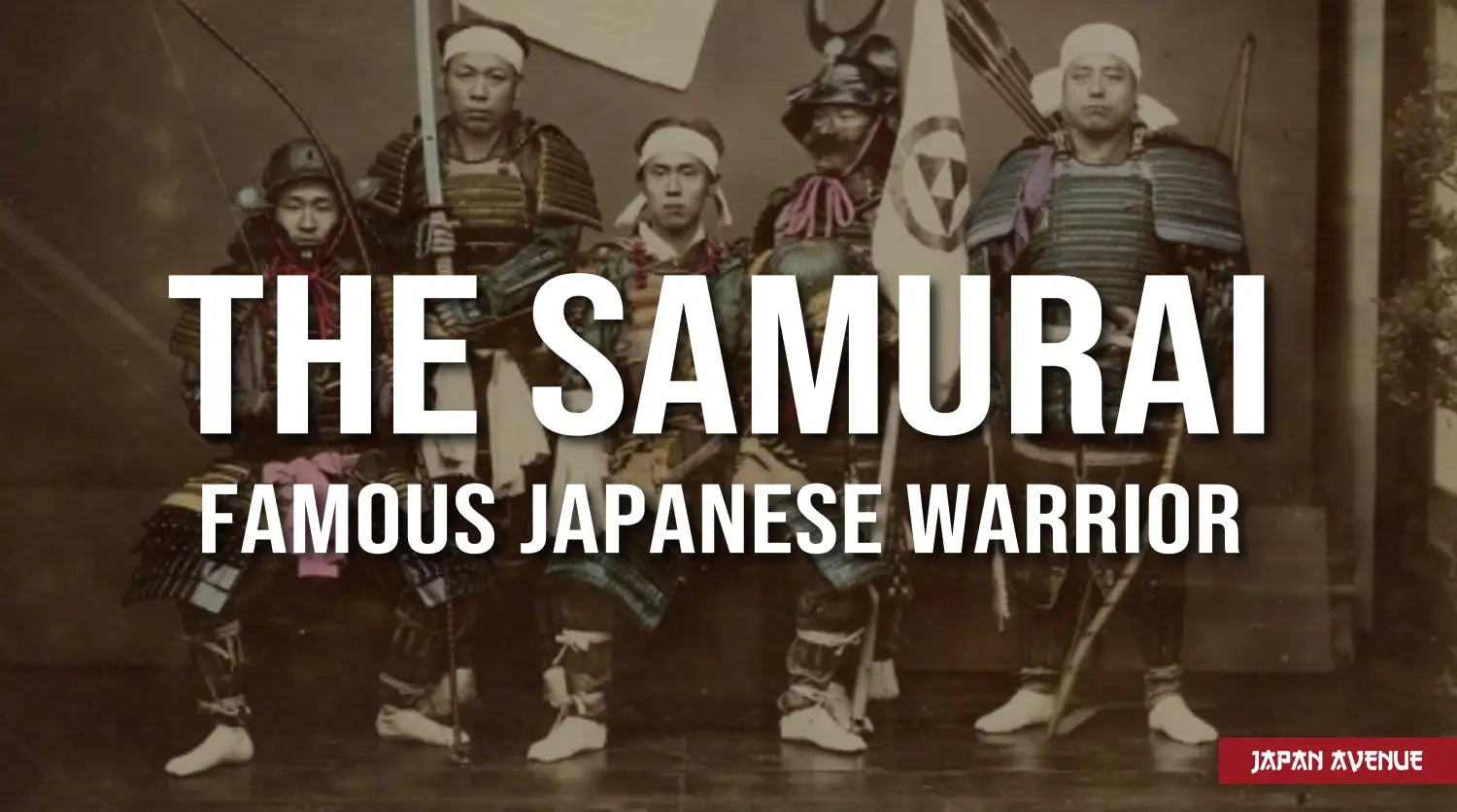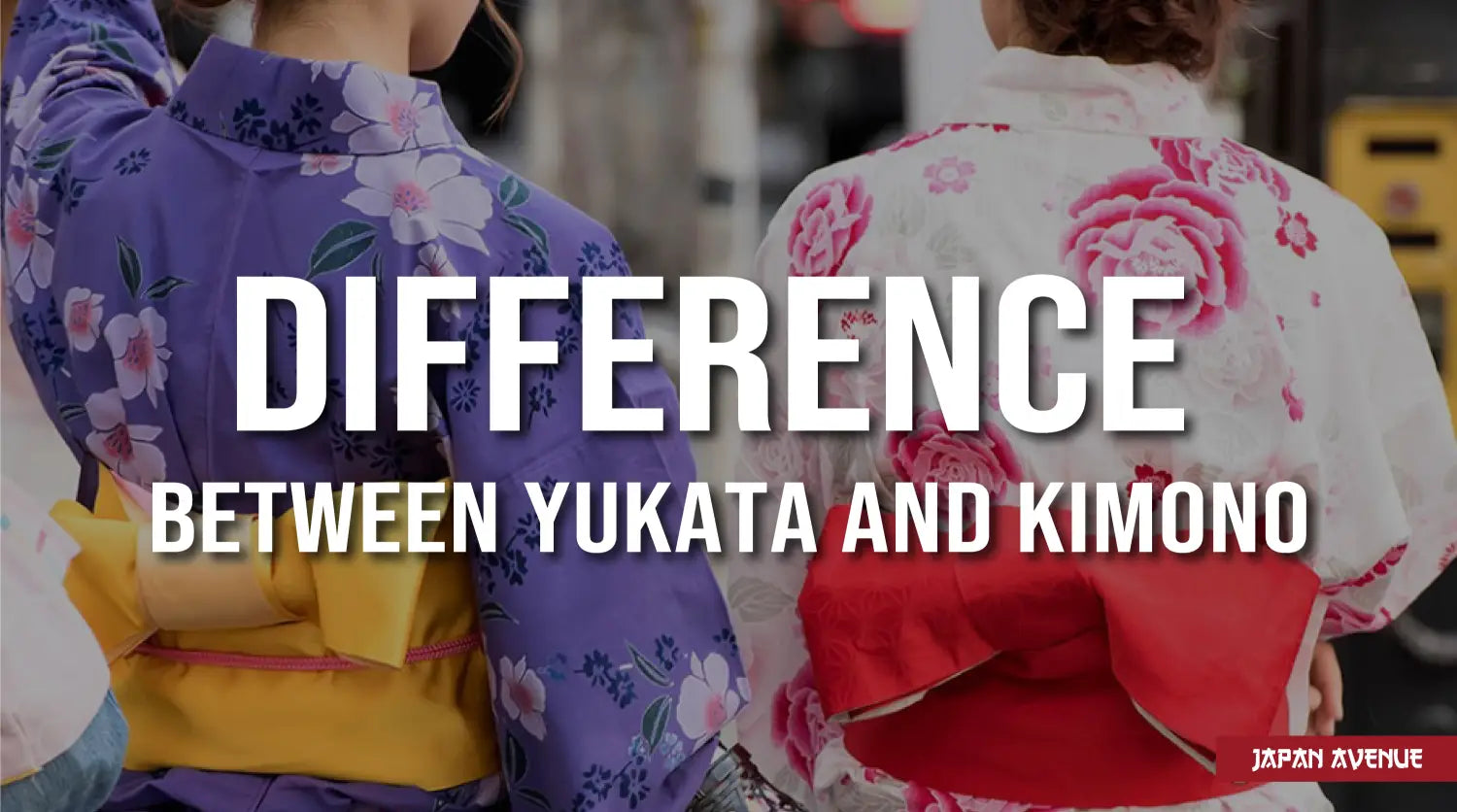Want to learn more about the Land of the Rising Sun?
In this article, you will find a non-exhaustive list of some emblematic symbols that represent Japan. Although summarizing the country with these 10 Japanese symbols would be a bit simplistic, it is an excellent basis to enrich your general culture and to shine in society.
It is important to know that the size of Japan is inversely proportional to its cultural richness, so if you want to learn more about this wonderful country, be sure to read the other articles on our blog about Japan.
Enjoy reading!
1. Flag of Japan

A red circle in a white rectangle. The flag of Japan is one of the most easily recognizable flags. Although it looks simple, this national symbol hides a deep meaning and a legendary history.
In Japanese, this flag is known as hi no maru, which means "the circle of the sun". The white color represents purity and the red circle - as you may have guessed - represents the sun.
According to the legend, a Buddhist priest offered a sun disk to the Emperor of Japan who was then considered as the descendant of Amaterasu, the Sun Goddess.
The first use of the Japanese flag is said to date back to 701, but it was not officially declared as a national symbol until August 13, 1999.
2. Mount Fuji

This volcanic mountain is located on the largest island of the Japanese archipelago, and is the highest point of the country (3,776 meters above sea level).
Mount Fuji is easily recognizable with its cone shape and its snow-covered summit. A very popular destination for tourists. It is possible to climb it (even for inexperienced hikers) or simply enjoy the surrounding landscape. The last eruption of this volcano was in 1707 and lasted for about two weeks. Today, it is still active.
👉 Want to impress your friends? Discover 10 interesting facts about Mount Fuji!
This mountain, of exceptional beauty, has always fascinated Japanese people and artists, including the painter Hokusai who realized a series of prints based on Mount Fuji. This project, known as the Thirty-Six Views of Mount Fuji, gave birth to the famous painting The Great Wave off Kanagawa.
3. Cherry blossoms

Each year at the beginning of spring, the streets and parks of Japanese cities take on a beautiful pale pink color. The perfect time to go for a walk and admire the cherry blossoms (sakura in Japanese).
Their blossoming is a real event that is celebrated throughout the archipelago. With family and friends, Japanese people are invading the parks to enjoy a picnic and a drink of sake under the blossoming cherry trees. This tradition is called Sakura Ohanami, which means "cherry blossom contemplation".
4. Sushi
When hearing the word sushi, you probably imagine watching a movie with your friends while enjoying a plate of sushi ordered at the local Japanese restaurant 😉
This Japanese dish made from rice and raw fish is a real hit, all over the world, but the sushi we are familiar with is far from being like the sushi in Japan. Mistakenly considered as the emblem of the Japanese kitchen, their consumption remains occasional in the Land of the Rising Sun, although you can find them almost everywhere (restaurant, konbini, hypermarket...).
In the West, the sushi we usually eat (a ball of rice covered with a thin slice of raw fish) is the nigiri-sushi, one of the first forms of sushi invented.
In Japan, the word sushi refers to a whole range of dishes made of vinegared rice and raw fish, seafood or vegetables. There are about eight different forms of sushi. The tradition is to eat sushi with a pair of chopsticks, if you know how to use them!
5. Geishas

Geishas are the ultimate embodiment of Japanese elegance and refinement. These women devote their lives to traditional Japanese arts such as dancing, singing, poetry, flower arrangement and playing traditional instruments.
The literal meaning of the term geisha is " art practitioner ".
The job of a geisha is to sell her time and talents to entertain wealthy clients at parties or shows. Geishas are in no way prostitutes, contrary to popular beliefs. They must have a high level of general culture and master the art of conversation.
To become a geisha, you have to start your training at a very young age and this long apprenticeship often involves sacrificing your childhood and your dreams of having a family.
6. Sumo

Considered as demigods, sumo wrestlers are very much appreciated in Japan. This Japanese wrestling sport is many centuries old and was first mentioned in writings dating back to 712.
The rules of sumo wrestling are simple: you must succeed in making your opponent leave the circle (dohyô) or make a part of his body, other than the feet, touch the ground.
Before the fight, the wrestlers perform a preparation ritual that consists of chasing away evil spirits and impressing the opponent with murderous stares, thigh slapping and ceremonial gestures. This ritual usually lasts longer than the fight itself.
7. Samurais

Illustration based on the legend of Yasuke (the first black samurai in Japan).
The samurai, with his distinctive helmet and katana, is an emblematic figure of Japan, easily recognizable all over the world.
These ancient Japanese warriors marked the history of the country until the beginning of the Meiji era (1868-1912), a period that marked their disappearance.
The term "samurai" comes from the verb saburau which stands for "to serve" and designates a warrior at the service of a lord, the daimyo.
The samurai receives a strict education and must respect a code of honor, the bushido. He must be faithful and fearless, but also educated and refined.
8. Maneki Neko

Maneki neko means "the beckoning cat" in Japanese.
If you ever visited Japan, you may have seen this little cat figure at the entrance of shops, restaurants or even in people's houses. This cat is represented sitting, with one or two front legs raised and a friendly smile.
A traditional Japanese lucky charm, said to bring luck, happiness and good fortune to its owner. Check out our Maneki Neko collection to find yours!
The maneki neko has many fascinating stories and legends that tell of its origins. Read our article about Maneki neko, the Japanese lucky cat, to learn more about him.
9. Temples and shrines

In Japan, two main religions coexist in harmony, Buddhism and Shintoism. As a result, there are two main types of religious monuments: Buddhist temples and Shinto shrines.
Shintoism, the native religion of Japan, was born from a mixture between animism and shamanism. This religion is based on the veneration of nature's forces and kami, sorts of "deities" or "spirits" that are present everywhere: in the forest, on the top of a mountain or underneath a waterfall... Each sanctuary is generally dedicated to one single deity. At the entrance of these sanctuaries we find komainu, lion statues designed to chase away evil spirits. Officially, there are 79,000 Shinto shrines throughout Japan.
Buddhism was brought from China and Korea and appeared in Japan between the 5th and 6th century. This religion is based on the wisdom of Buddha (Sanskrit for "enlightened") and guides people on a spiritual path to enlightenment. There exist more than 77,000 Buddhist temples throughout the archipelago, some of which are listed as World Heritage Sites by UNESCO.
10. The Zen spirit

Although Zen is primarily a branch of Buddhism - as Catholicism is a branch of Christianity - Japanese people have appropriated the principles of Zen Buddhism to such a degree that it constitutes the essence of Japanese spirituality and aesthetics.
The Zen Spirit is found in many art forms such as in the tea ceremony, flower arrangement, calligraphy and even martial arts.
The most obvious example for a foreigner might be the Japanese Zen garden. This garden is a peaceful and meditative space, where man and nature are in complete harmony.




